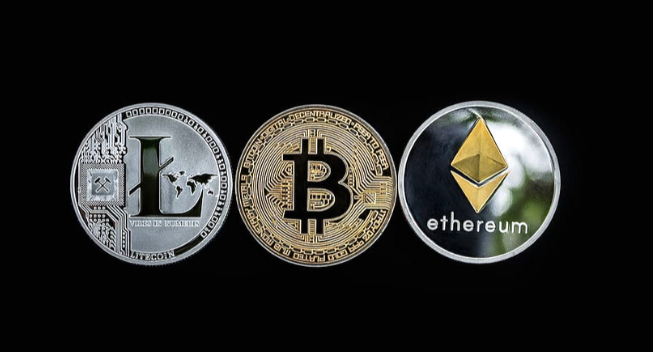Cryptocurrency is decentralized digital money, using a technology called a blockchain. Blockchain is a decentralized technology expanded across many computers that manage and record transactions.
We may be familiar with the most popular versions, Bitcoin and Ethereum, but there are more than 5,000 different cryptocurrencies in circulation. We can use crypto to buy general goods and services. Although several people invest in cryptocurrencies as they would in other assets, like stocks or precious metals. While cryptocurrency is a novel and interesting asset class, buying it can be risky as we must take on a fair amount of research to completely understand how each system works.
Nowadays cryptocurrencies have become a global aspect known to most people.

Meaning of Cryptocurrency
The term “cryptocurrency” is an abbreviation of “cryptographic currency.” While a cryptocurrency is a form of digital currency, there are many digital currencies today that aren’t cryptocurrencies. For example –Zynga chip, PayPal, and even our traditional fiat currencies are mostly digital.
History of Cryptocurrency
Check below the history of cryptocurrency:
| Year | History |
| In the year 1983 | The American cryptographer David Chaum invented an anonymous cryptographic electronic money called ecash. |
| In the year 1995 | David Chaum implemented it through Digicash. The first form of cryptographic electronic payments required user software to withdraw notes from a bank and choose particular encrypted keys before they can be sent to a recipient. This enabled the digital currency to be untraceable by the issuing bank, the government, or any third party |
| In the year 1996 | The National Security Agency published a paper entitled “How to Make a Mint: the Cryptography of Anonymous Electronic Cash”, which representing a Cryptocurrency system, first publishing it on an MIT mailing list. |
| In the year 1997 | After publishing “How to Make a Mint: the Cryptography of Anonymous Electronic Cash” on an MIT mailing list and later it is published in The American Law Review (Vol. 46, Issue 4). |
| In the year 1998 | Wei Dai published a description of “b-money”, described as an anonymous, shared electronic cash system. Shortly thereafter, Nick Szabo explained bit gold. Similar to bitcoin and other cryptocurrencies that would follow it, bit gold was defined as an electronic currency system that required users to complete a proof of work function with solutions being cryptographically put together and published. |
| In the year 2009 | The first decentralized cryptocurrency, bitcoin, was formed by presumably pseudonymous developer Satoshi Nakamoto. SHA-256, a cryptographic hash function, is applied in its proof-of-work scheme. |
| In the year 2011 | Namecoin was formed as an attempt at creating a decentralized DNS, which would make internet censorship very difficult inApril 2011. Soon after, in October 2011, Litecoin was released. It applied script as its hash function instead of SHA-256. Another notable cryptocurrency, Peercoin used a proof-of-work/proof-of-stake hybrid. |
| In the year 2014 | The UK declared its Treasury had been commissioned a study of cryptocurrencies, and what role, if any, they could play in the UK economy on 6 August 2014. The research was also to report on whether regulation should be acknowledged. |
Types of Cryptocurrency
There are three main types of cryptocurrency
- Bitcoin
- Altcoins
- Tokens (for dApps)
Let’s discuss these cryptocurrencies one by one below.
1. Bitcoin

It is the first cryptocurrency that was introduced and is considered the “digital gold”. Bitcoin holds a market capitalization of $172.76 billion, the largest of any other variant of cryptocurrency. A unit of Bitcoin can be divided into Satoshis, which is equal to the relationship of rupees and paise.
Moreover, the Bitcoin network is so created that it can only have 21 million units of Bitcoin circulation at any point in time. The limited availability is a primary component that operates its market price. Nowadays, the market supply of Bitcoin is 18.39 million.
2. Altcoins
This type primarily includes forks and alternate versions of Bitcoin, thus, the name. But, some Altcoins are exponentially distinct from Bitcoin and use varying algorithms. For instance, Ethereum, is an altcoin, is not a currency but a platform where entities can create their apps based on blockchain.
Currently, there are more than a thousand altcoins. Some of the important altcoins are Ethereum, Factom, Litecoin, NEO, etc.
3. Tokens
Tokens are products of altcoins like Ethereum and NEO. These cryptocurrencies do not have a separate blockchain but instead run on the decentralized apps created via such altcoins. However, tokens carry a very low value compared to the other two types mentioned above, because they can only be used to purchase items from such decentralized apps or dApps.
The main features of cryptocurrencies from digital currencies and fiat money are mentions below:
- Decentralization
- Anonymity
- Transparency
- Transactions
- Security
Laws in India on Cryptocurrency
There is no crypto regulation in India. However, buying Bitcoin is absolutely legal in India. There is no law prohibiting Indians from selling/buying cryptocurrencies. There was a banking ban between July 2018 – March 2020 due to which cryptocurrency exchanges were not ready to hold bank accounts.
But, the Supreme Court of India suppressed the banking ban in 2020. As far as the WazirX platform is concerned, they stated that it is a part of the Internet and Mobile Association of India (IAMAI). Currently, they are working on a code of conduct for cryptocurrency companies in India.
What are Cryptocurrency Exchanges?
Cryptocurrency exchanges are platforms that help the trading of cryptocurrencies for other assets, consisting of digital and fiat currencies. In effect, cryptocurrency exchanges work as an intermediary between a buyer and a seller and make money through commissions and transaction fees.
On common cryptocurrency exchanges, $100 can be exchanged for bitcoin of equal value, and vice-versa. Likewise, bitcoin worth $100 can be exchanged for Ethereum of equal value. The same idea can be applied to different assets based on what is offered by the exchange.
Advantages of Cryptocurrency
- Built-in Scarcity May Support Value
- Loosening of Government Currency Monopolies
- Self-Interested, Self-Policing Communities
- Robust Privacy Protections
- Harder for Governments to Exact Financial Retribution
- Generally Cheaper Than Traditional Electronic Transactions
- Fewer Barriers and Costs to International Transactions
Cons of Cryptocurrency
- Lack of Regulation Facilitates Black Market Activity
- Potential for Financial Loss because of Data Loss
- Potential for Tax Evasion in Some Jurisdictions
- Potential for High Price Volatility and Manipulation
- Often Can’t Be Exchanged for Fiat Currency
- Limited to No Convenience for Chargebacks or Refunds
- Adverse Environmental Impacts of Cryptocurrency Mining
Top 5 Cryptocurrency in the World
Below is the list of top 5 cryptocurrencies in the world:
1. Bitcoin
In the year 2008, Bitcoin created, it was the first-ever cryptocurrency. No one knows who created Bitcoin. All we know that he/she goes by the pseudonym of Satoshi Nakamoto.
Bitcoin is a digital currency. It is fully based on a distributed ledger technology called a blockchain. Bitcoin reduces the need for centralized intermediaries like banks and credit card companies etc. when making electronic payments.
Two words that describe Bitcoin that is — decentralized and digital. It proposes to create an alternative for fiat currencies, like USD, GBP, JPY, etc.
2. Ethereum
Ethereum was trading at $1,837 at 9:33 am GMT on 9 March, according to CoinDesk’s platform. The second-largest cryptocurrency by total market capitalization at $211.2 bn, there was first proposed in 2013 by developer Vitalik Buterin, went live in July 2015, and relies on blockchain technology. The coin recently rose to a high of $1,958 on 19 February 2021.
3. XRP
XRP, a cryptocurrency that is popular with banks and other institutions, was trading at $0.48 at 9:34 am GMT on 9 March and has a market cap of $48 bn. This digital currency was designed in 2012 by blockchain company Ripple Labs and runs on its own blockchain protocol called Ripple.
4. Stellar
The co-founder of Ripple Labs Jed McCaleb formed the open-source blockchain payment system Stellar in 2014. Lumens is the native cryptocurrency for the system. Stellar is trading at $0.42 as of 9:34 am GMT on 9 March and has a market capitalization of $44.7bn.
5. Tether
Tether, originally dubbed Real coin, and it is launched in 2014 and is pegged to the US dollar. And making it one of the first cryptocurrencies to do so. It was trading at $1 as of 9:35 am GMT on 9 March. The digital currency is the largest Stablecoin – more steady because it’s attached to a fiat currency – by market capitalization at $37.6 bn, according to CoinDesk.
Current Position of Cryptocurrency in India
In India, the Cryptocurrency and Regulation of Official Digital Currency Bill, 2021, was introduced in the Lok Sabha to establish a supportive framework for the creation of a digital currency to be issued by the Reserve Bank of India (RBI). Although this bill was slated for discussion during the 2021 Winter Session of Parliament, it was not addressed. Recently, the Ministry of Finance faced inquiries about the status of the Bill in the ongoing Lok Sabha session.
Cryptocurrencies, as a medium of payment, remain unregulated in India, with no central authority overseeing their use. Consequently, there are no established rules, regulations, or guidelines for resolving disputes arising from cryptocurrency transactions. This means that trading in cryptocurrencies is carried out entirely at the investor’s own risk.
India’s Finance Minister, Nirmala Sitharaman, has proposed taxing digital assets, sparking further debate about the legality of cryptocurrencies. While the decision to tax virtual currencies is seen by many as a step towards official recognition, the government has yet to provide a definitive stance on whether cryptocurrencies like Bitcoin are legal in India.
Statements from key figures such as the Governor of the Reserve Bank of India and various government officials, including the Finance Minister, suggest that while cryptocurrency is not explicitly banned, it is not legal either. The sector remains unregulated. However, the Union Budget 2022 introduced significant measures, including a 30% tax on gains from cryptocurrencies and a 1% tax deducted at source, indicating the government’s intent to impose fiscal oversight on cryptocurrency transactions.
How to Invest in Cryptocurrency
The most recommended place to purchase cryptocurrency is cryptocurrency exchanges. There are different exchanges to choose from, with the most famous being Coinbase, GDAx, and Bitfinex. These exchanges enable you to purchase currencies like Bitcoin and Ethereum with a debit card. With most popular currencies, including Bitcoin, we can buy fractions of a coin, so we don’t need to invest thousands of dollars to get in the game.
If you’re interested in buying altcoins, odds are you’ll need some Bitcoin or Ethereum to make that purchase. As a general rule, you can’t buy altcoins with fiat currency (that’s how crypto enthusiasts relate to paper money, like dollars or euros). But that may change in the future.
Exchanges make money by charging fees for managing transactions, although there are other websites you can visit to interact directly with other users who are looking to sell cryptocurrencies. LocalBitcoins is one popular example. The process will be more carried out than with an exchange, and there is the added risk of dealing directly with a stranger whose currency you can’t verify.
Another option that is becoming more common is the Bitcoin ATM. Nowadays, there are more than 4,000 cryptocurrency ATM locations in 76 countries. You can use them to buy Bitcoin and send it to your wallet.
Summing it up
Cryptocurrency is an interesting concept with the power to fundamentally remodel global finance for the better. Although while it’s based on sound, democratic principles, cryptocurrency remains a technological and practical work in progress. For the foreseeable future, nation-states near-monopoly on currency creation and monetary policy seems secure.
Frequently Asked Questions
Q1: What Is Cryptocurrency in Simple Words?
Ans. Cryptocurrency is an internet-based medium of exchange that uses cryptographic functions to conduct financial transactions. Cryptocurrencies leverage blockchain technology to attain decentralization, immutability, and transparency.
Q2. How Do We Get Cryptocurrency?
Ans. Any investor can purchase cryptocurrency through crypto exchanges like Coinbase, Cash app, and more.
Q3. What Is the Point of Cryptocurrency?
Ans. Cryptocurrency Many experts see blockchain technology as having serious potential for uses like online voting and crowdfunding, and major financial institutions such as JPMorgan Chase (JPM) see the potential to lower transaction costs by streamlining payment processing.
Q4. How is cryptocurrency sent and received?
Ans. Cryptocurrencies can be given directly between two parties by the use of private and public keys. All these transfers can be done with minimal processing fees, enabling users to avoid the steep fees charged by traditional financial institutions.
Q5. What is the first cryptocurrency?
Ans. The first cryptocurrency ever created is Bitcoin.



